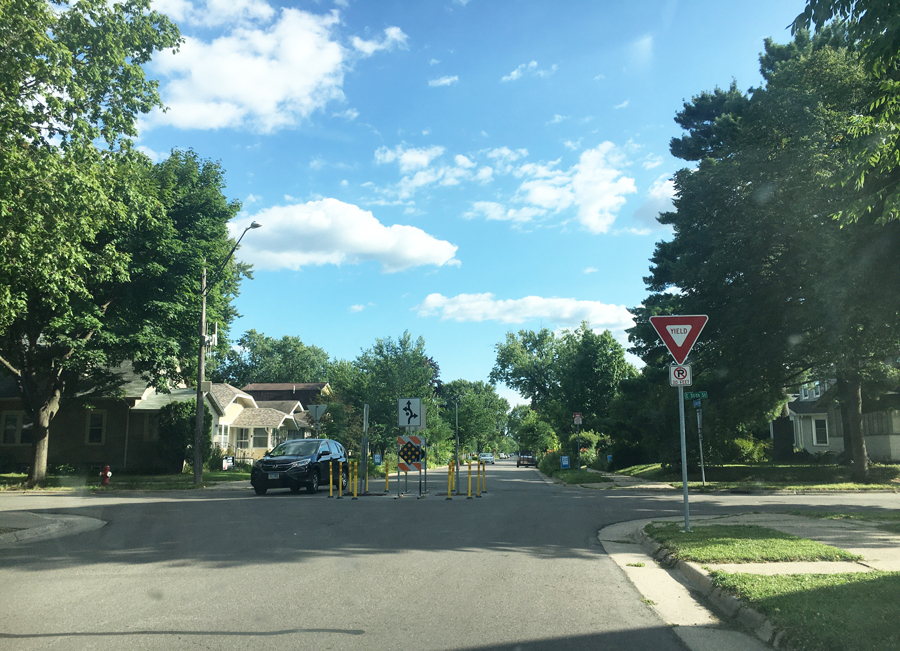Traffic circles are an intersection control that can lower speeds and improve safety at the intersection of two Urban Neighborhood streets.
Introduction
Traffic circles are an intersection control that can lower speeds and improve safety at the intersection of two Urban Neighborhood streets. Given space constraints, traffic circles are generally not an option for other street types.
Design Considerations
|
When to use
|
Traffic circles should be considered whenever there are intersecting Urban Neighborhood streets. They should be prioritized at intersecting Urban Neighborhood streets along neighborhood greenways or streets with documented speeding or crash challenges. Depending on the situation, it may be challenging to balance providing truck access with achieving traffic calming.
|
|
Dimensions
|
- Traffic circles should be designed to accommodate appropriate design and control vehicles while keeping speeds as low as possible. The diameter of the traffic circle will vary depending on the context and turning movements will need to be run.
- Designers should consider mountable curbs to handle larger vehicles while supporting low speeds.
|
|
Accessibility considerations
|
- Traffic circles can present challenges for people with visual disabilities. Extra consideration should be made to ensure that pedestrians are visible to drivers.
- Detectable warning surfaces made of truncated domes must be installed on the curb ramps to alert users that they are about to enter the roadway and directional curb ramps are recommended. See MnDOT’s current curb ramp guidelines, curb ramp standard plans, and other design guidance and standards for details on constructing detectable warnings.
- Designers can also consider installing marked crosswalks to future highlight where pedestrians will be crossing.
|
|
Signage
|
- YIELD (R1-2) signs are used on the intersecting streets rather than stop signs.
- A intersection lane control sign with fish-hook arrows is used on the traffic circle (see Figure 3.7F.1).
Figure 3.7F.1: Traffic circle signage

|
|
Greening
|
- Designers should generally work to include greening in traffic circles whenever feasible.
- Plantings need to be less than 3’ tall to maintain good visibility.
- Maintenance of greening needs to be coordinated ahead of time.
- There are unique considerations for placing green stormwater infrastructure in a median, including details on inlets and maintenance access. Coordinate with Surface Water and Sewers.
- See greening guidance and green stormwater infrastructure guidance for more details.
|
|
Delineator traffic circles
|
Low-cost traffic circles can be implemented using delineators in street retrofit projects (see Figure 3.7F.2).
Figure 3.7F.2: Delineator traffic circle

|





